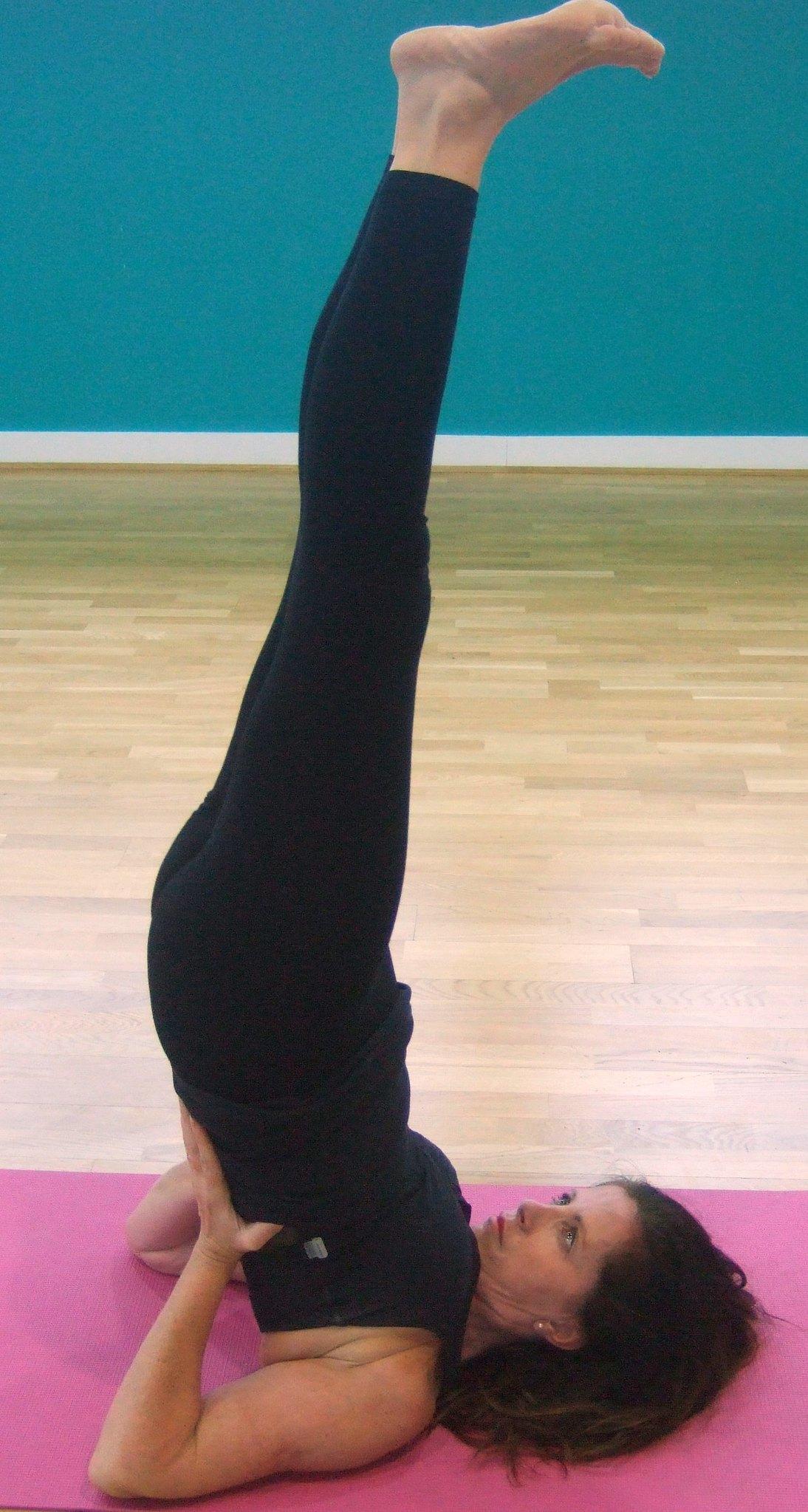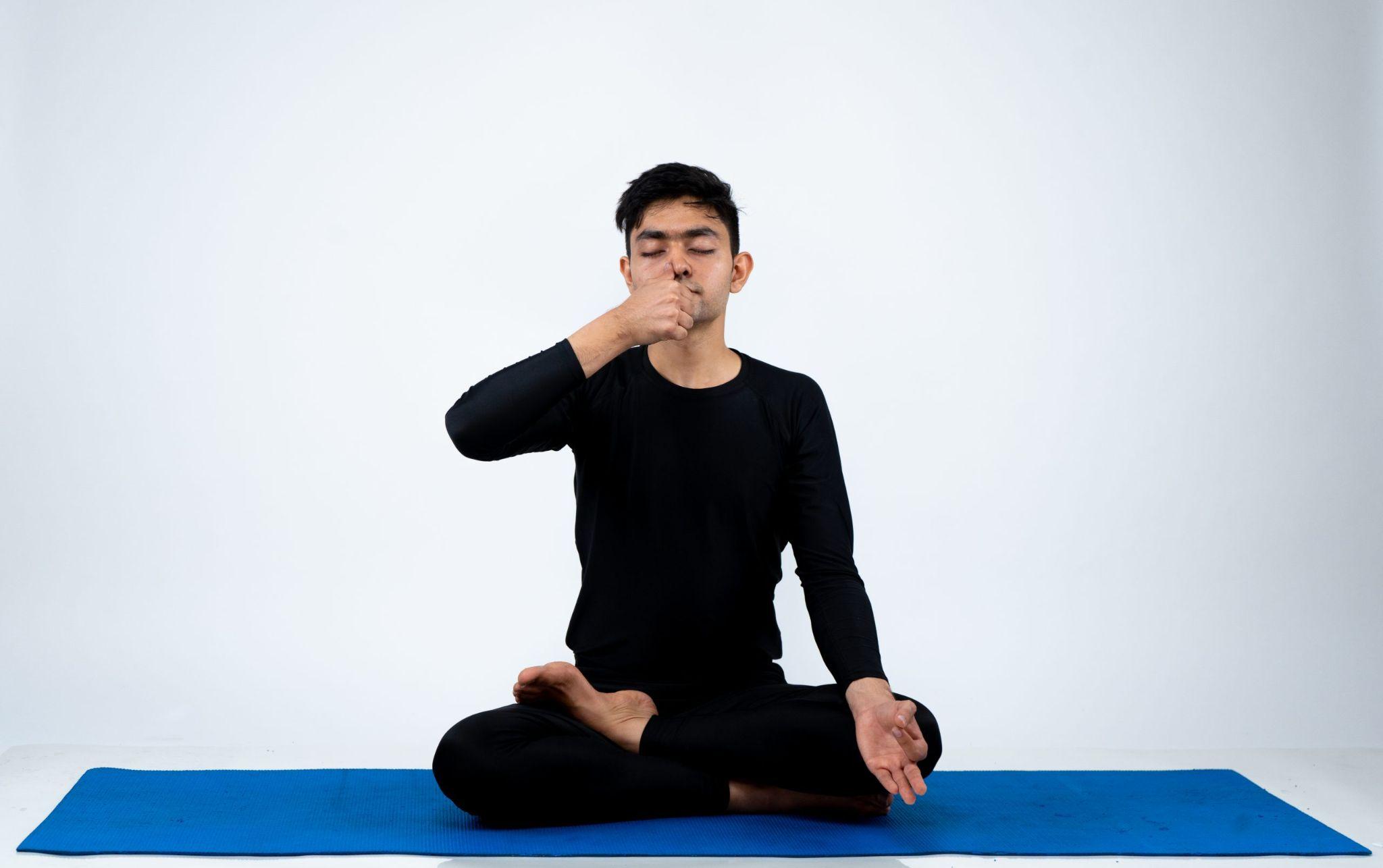How Does Yoga Help with Hyperthyroidism?
Poses, Pranayama, and Benefits

Hypothyroidism is a common thyroid disorder, particularly among women, characterized by insufficient thyroid hormone production. This condition progresses gradually, often with symptoms mistaken for other issues like aging or menopause. While medication helps manage hypothyroidism, incorporating yoga into your routine can enhance your well-being and support thyroid health.
Understanding Hypothyroidism
Hypothyroidism arises from an underactive thyroid gland, leading to reduced thyroxin hormone production. This insufficiency disrupts metabolism, resulting in symptoms like:
- Fatigue
- Weakness
- Weight gain.
Yoga for Hyperthyroidism: A Natural Therapy
Usually, hypothyroidism is well treated and controllable with the supplementation of thyroxin, but, there are certain methods that can help you live with this condition very happily and without any complications.
Yoga is one of the few natural remedies that shows promising results for hypothyroidism. While more research is required before yoga can be undertaken as a course of treatment for hypothyroidism, many yoga poses have been studied and proven to work.
The body’s metabolism is regulated by the endocrine system, particularly the thyroid gland. Yoga for hypothyroidism is considered to be effective as it has a positive effect on the organs of the endocrine system, especially by stimulating the parathyroid and thyroid glands. The twisting, stretching, and compressing caused by the yoga poses for hypothyroidism help in providing the endocrine organs with a massage and also improve their functioning.
The most recommended pose for hypothyroidism is the Sarvangasana (Shoulder Stand Pose). Ancient texts vouch for the efficacy of this pose, and recent studies have also confirmed its help in improving hypothyroidism.

Sarvangasana: The Shoulder Stand Pose
The Shoulder Stand Pose is one of the inverted poses that reverse the effects of gravity by redirecting blood from your legs to your neck where the thyroid gland is located. This helps stimulate and nourish the thyroid gland, which brings about weight loss and an increase in the body’s metabolic rate.
The steps involved in the shoulder stand are given below:
- Lie flat on your back.
- Lift your legs as high as possible while your waist is still in contact with the ground.
- Now lift up your waist so that your toes go behind your head.
- Bring your waist up perpendicular to the ground, so that your neck forms a right angle. Your chin should go into the hollow of your throat and your back should be perfectly straight, with your shoulders bearing the weight of your body.
- Hold your waist in position by holding it with both hands and bracing your elbows on the ground.
- Now, straighten your legs till they are straight up so that your entire body’s weight is on your shoulders.
- Hold this post for as long as possible.
Additional Beneficial Yoga Poses
While the Shoulder Stand Pose is the most recommended pose, there are many more that can help. The practice of yoga is not in just one pose, but a series of them. Following a series of such poses is highly recommended.
Other effective yoga poses for hypothyroidism are:
- Setu Bandha Sarvangasana (Bridge Pose)
- Vipritakarani (Inverted Pose)
- Matsyasana (Fish Pose)
- Halasana (Plough Pose)
- Simhamudra (the Lion Pose)
Pranayama for Hypothyroidism

Practicing pranayama for hypothyroidism is also very beneficial in maintaining a balanced metabolism. The benefits of performing pranayama have been found to reverse the two main causes of hypothyroidism.
The first is the result of previous or present inflammation of the thyroid that causes a lot of thyroid cells to get damaged or destroyed. This will cause them to be unable to produce sufficient amounts of triiodothyronine and thyroxine. Another common cause of the malfunctioning of the thyroid gland is known as autoimmune thyroiditis or Hashimoto’s thyroiditis. This happens when the thyroid becomes inflamed due to the immune system of the patient. The second cause is due to the effects of different medications. Performing pranayama for hypothyroidism can help reverse the process significantly.
Some of the effective pranayamas for hypothyroidism are:
- Kapalbhati (Cleansing)
- Anulom Vilom (Alternate Nostril Breathing)
- Ujjayi (Ocean Breath).
All of these should be done with Jalandhara Bandha.
Meditation for Hormonal Balance
Some of the Yoga gurus suggest that meditation plays an important role in keeping your hormonal levels normal. We know very well that hormones get disturbed during various human emotions such as anger and love. Meditation helps by controlling brain chemicals and neurotransmission. There are various types of meditation that you can perform to harness a peaceful mind. Meditation along with Yoga brings stability to the mind, body, and soul.
How Yoga Works for Hypothyroidism
In his book, Yoga & Medical Science, Dr Krishna Raman sees yoga as being complementary to medical treatment. “In cases of hypo- or hyper-functioning, where medicines are unable to provide total relief, yoga is a valuable adjunct as symptomatic treatment,” he writes. “Yoga can improve poor energy levels in a hypothyroid patient on medication. Passive poses initially, followed by active yoga practice are the key to relief.” He also cautions against the belief that Sarvangasana (Shoulderstand) can work on its own to cure a clinically significant thyroid malfunction.
Unlike medication, yoga does not directly influence the thyroid gland to start functioning better in any way. Most of the benefits that you see will be small and very gradual, and you need to practice these poses over months to see improvement. It has, however, been proven that yoga does help and that doing these poses does have long-term benefits.
This is because these poses promote blood flow to certain regions of the body. This increased blood flow replenishes the organs in these regions, helping them function better. Over time, many organs gain full functionality if they have not suffered irreparable damage. Also, yoga promotes the flow of healing energy in the body. This is the reason why the practice of yogic breathing (pranayama) is considered important, and in many cases, pranayama should be adhered to strictly while performing or holding certain postures to gain full benefits. Ancient Indian medicine considers that many illnesses in the body are caused by interruption or blockage of the flow of energy, and pranayama is considered essential in restoring this function.
Important Considerations
Please keep in mind that these poses and/or pranayama techniques should not be understood as alternative medicine. Yoga should be done alongside regular medication, which will help reduce your dependency on medication in the long term. To get the best results, you must evaluate your lifestyle, diet, and exercise plans in addition to practicing yoga for hypothyroidism.

